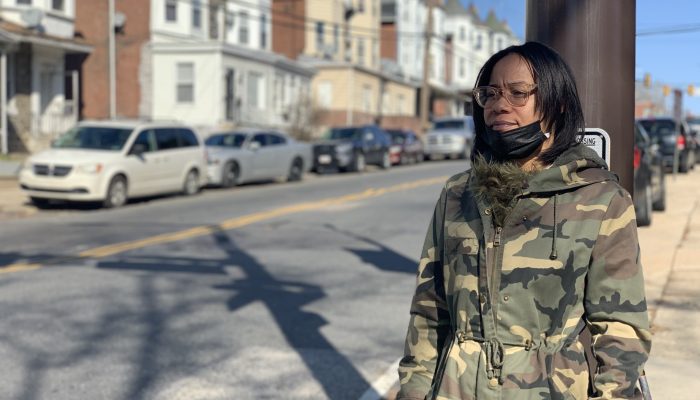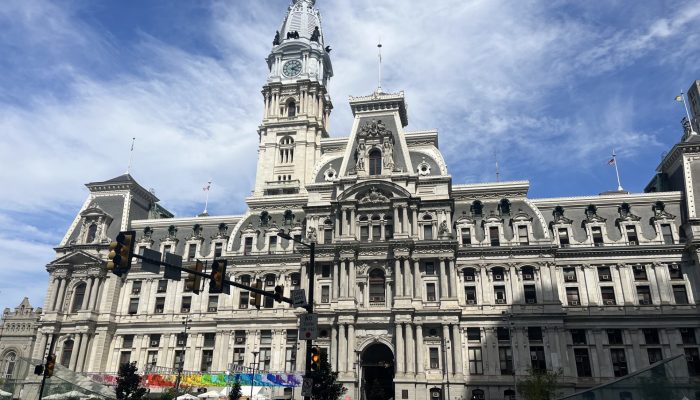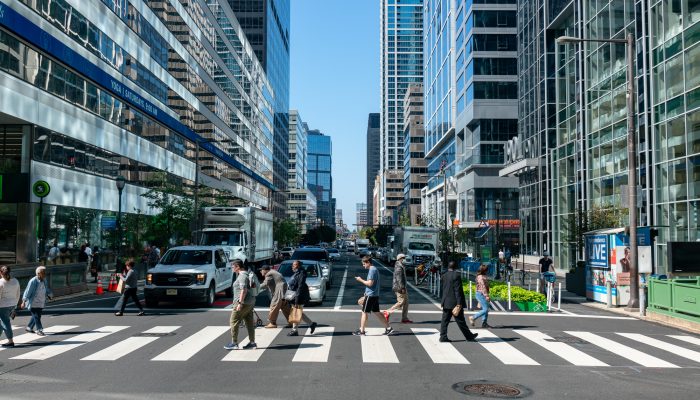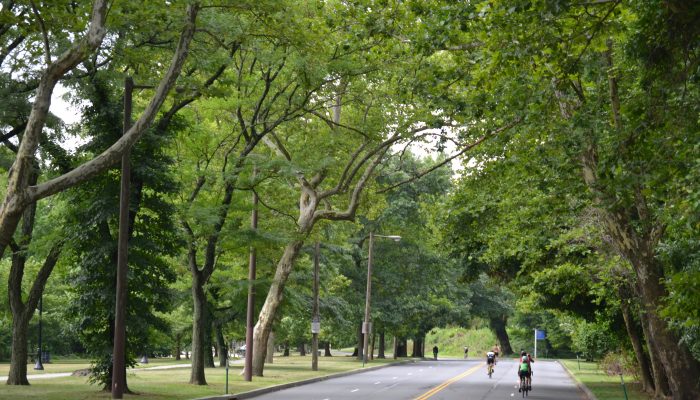By Tara Woody, Education Specialist, Office of Complete Streets, and Victoria Addison, Communications Manager, Office of Children and Families
A community-led effort to slow traffic and increase pedestrian safety around Overbrook Educational Center (OEC) is bringing a new plan for safer streets to the West Philadelphia neighborhood.
A public K-8 Community School in Overbrook, OEC serves nearly 300 students, 27 percent of whom are visually impaired and require braille, large print, technology aid, and assistive devices.
The idea for improved pedestrian safety started when the parents of a visually impaired student at OEC requested auditory signals be installed at a busy intersection near the school. The family’s request prompted OEC staff, led by Community School Coordinator Caroline Robinson, to reach out to City transportation officials. “They asked us to organize a community forum on traffic safety in the area.”
Over the next two years, the community collaborated with the Office of Transportation, Infrastructure and Sustainability (OTIS), the Philadelphia Department of Streets, and the Office of Children and Families (OCF) to configure ideas for traffic calming near the center of the neighborhood where the school is located. Neighborhood residents expressed concerns about speeding, cut-through traffic, and poor sight distance for pedestrians in the area surrounding the school.
In response, City engineers, planners, and engagement professionals worked with OEC neighbors and the Community School staff to create a traffic calming plan to mitigate the traffic safety issues near the school.
In 2021, the Streets Department first completed the American Cities School Crossing Project. The project brought safety improvements near OEC to help people with visual and mobility impairments, such as an audible pedestrian signal, ramps with detectable warning surfaces, new curb bump-outs to extend the sidewalk to help people crossing, and upgrades to traffic signals.
This effort culminated in January, when the City was awarded $985,000 as part of PennDOT’s Transportation Set-Aside Program to develop a “Vision Zero Safer Streets Around Schools” plan to this Community School to help decrease speeding and further improve safety on residential streets around the school.
Samia Bolling, the parent of a sixth grade student at OEC, emphasizes the role of community and family feedback in conceiving the project, a key principle of the work of Community Schools in the pursuit of equity.
“Our visually impaired and blind [students] should be our first focus, and all the children should be a priority,” said Bolling. “I’m glad it was a school-community effort. I thank the school for always getting parental input. When you get a determined group of people together, we’ll get it done. I was born and raised in this community and can’t wait to see the final process.”

“I’m super happy for the school about this,” added Sophia Peake, a former OEC staff member and parent of an 8th grade student at the school. “OEC is a model school in terms of community and partnerships and this will benefit not only them, but many of the neighboring schools around it as well.”
This project is an example of how Community Schools work actively to identify and confront policies, practices and cultures that keep students of different backgrounds and races from achieving equitable outcomes. Community Schools proactively and intentionally empower those typically disempowered by barriers to participation. National standards can be found here.
“We’ve worked closely with OTIS to build a conceptual design based on feedback from OEC families, community members, and neighbors,” Robinson added. “This has truly been a complete community effort with safety and accessibility at the heart of it all. OEC is thrilled to see this money invested in the neighborhood and grateful to everyone who has come together to make it happen.”
Traffic safety improvements as part of this project will include:
- Speed cushions on neighborhood streets
- Concrete curb bump-outs to help people crossing
- Corner clearances and pavement markings
- Upgrades to curb ramps, including adding detectable warning surfaces
- Signage upgrades
- LED lighting upgrades at intersections
Next Steps
Currently, the project is still in a design phase. Construction is anticipated to begin in mid-to-late 2023 or early 2024. Residents with questions or comments may contact VisionZeroPHL@phila.gov.




